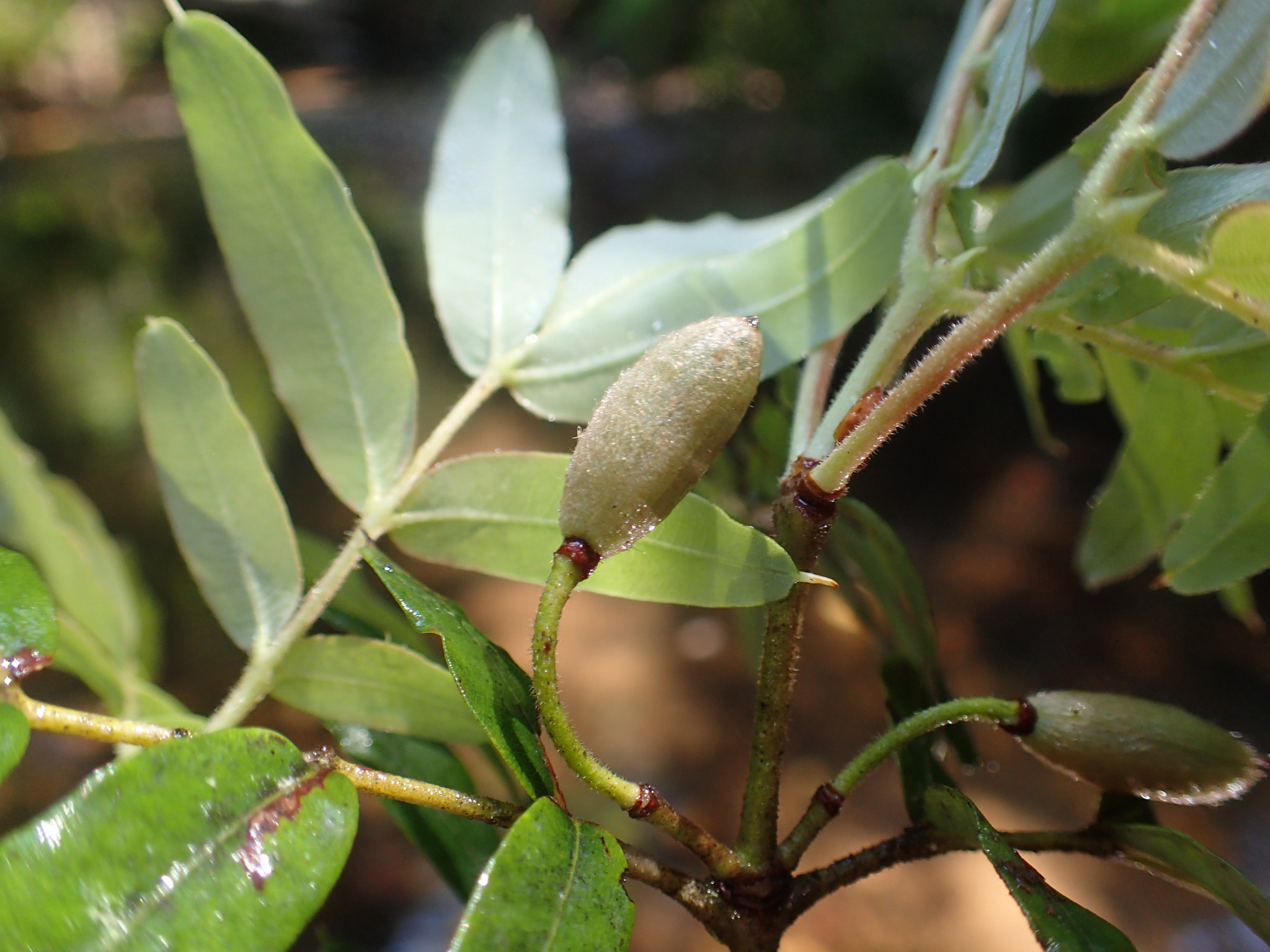
Greek eu — well, true, kryphios — cover; referring to the cap-like calyx of fused sepals that falls off when the flower opens.
Description as for family.
Most eucryphias need moisture, humus-rich soils and shelter from winds but thrive on sunshine. The following 3 species are less common in cultivation: E. cordifolia Cav., Roble de Chile, a temperate rainforest plant from Chile, has leaves that are mostly 3-10 cm long, generally orientated upwards and with scalloped to toothed margins and a cordate base. E. glutinosa (Poepp. &Endl.) Baill., Nirrhe, from Chile has compound pinnate leaves with 3-5 leaflets. Double-flowered forms are sometimes grown and are referred to the Plena Group. E. ×nymansensis Bausch is a hybrid between the 2 species already described (E. cordifolia × E. glutinosa); it originated as a deliberate cross at Nyman's Nsy, Sussex, UK, in 1914 and is a dense-foliaged, columnar tree with simple or compound, sharply toothed leaves or leaflets and flowers to about 7 cm wide in late summer to autumn. It is generally grown as the cultivar 'Nymansay' which is an outstanding selection of the original cross.
Softwood cuttings.
Dress (1956).
Source: (2002). Eucryphiaceae. In: . Horticultural Flora of South-eastern Australia. Volume 3. Flowering plants. Dicotyledons. Part 2. The identification of garden and cultivated plants. University of New South Wales Press.
